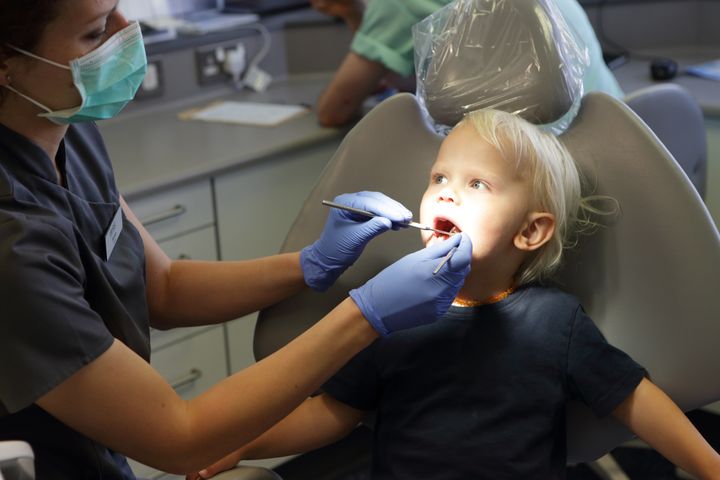Every 10 minutes, a child in England has a tooth removed in hospital due to preventable decay, according to recent data published by Public Health England (PHE). But that doesn’t mean all cases of tooth decay are preventable: 10% of kids in the UK have an enamel defect called Molar-Incisor Hypomineralisation (MIH), which means their teeth are more likely to wear away.
Claire Stevens, president of the British Society of Paediatric Dentistry (BSPD), says despite the fact the majority of her young patients lose teeth due to decay from sugar, “it’s important to recognise MIH is a condition and does have implications for children and families”.
We spoke to Stevens about what MIH is, how it can be spotted and what parents can do if they suspect their child may have it.

What is Molar-Incisor Hypomineralisation?
MIH is a condition where the enamel on an adult tooth does not form properly. Stevens highlights that it is very different to decay caused by eating or drinking sugary products, which happens when the bacteria in your mouth metabolises that sugar and forms acid that makes holes in teeth.
In comparison, a child with MIH has poorly-formed teeth in their mouth, which may wear away, regardless of whether they consume sugar. “This doesn’t affect all of their teeth,” Stevens says. “Usually it affects their first permanent molar teeth, which come through when a child is around six years of age.”
MIH, she explains, is still poorly understood as further research is needed to explain why certain teeth are affected. “You can see a child who has one perfectly normal tooth and another made at the same time that has MIH, it doesn’t affect all of the teeth equally,” she said
How can you tell if your child has MIH?
Stevens says parents will often be unable to spot MIH in their kids. However, she said a tooth with MIH is likely to “be more chalky and look different to their other teeth”. This is usually spotted when they go to the dentist and this is “another example of why kids need to go to the dentist early and regularly”. In some instances, a child with MIH may have bits of their teeth shearing away, which isn’t decay, just parts of the tooth falling off.
Although it does usually occur in a child’s molar teeth, they may get MIH on their front teeth - top and bottom. “These will be affected in a different way with patches on them - white or yellow - due to the way the enamel has been laid down,” Stevens says. “These teeth don’t break down though, that’s just a problem with the back teeth.”
“Children with this condition need to be seen by their dentist more frequently."”
- Claire Stevens, president of the British Society of Paediatric Dentistry (BSPD)
What does having MIH mean for your child?
Having MIH does mean a child is more likely to get tooth decay and the tooth is likely to wear away.
In some cases, the child may have to have a tooth removed. Stevens says this only happens if the long-term prognosis is not good. The decision about whether it’s in their best interest to lose teeth, rather than having a lifetime of trying to repair it, will be made when a child is around nine years old. “These children are left with fewer teeth, but no impact on their day-to-day lives,” she adds.
What should I do if my child has this condition?
“Children with this condition need to be seen by their dentist more frequently,” says Stevens. “Their teeth can look great one minute and six months down the line they can break down.”
If your child is diagnosed, the dentist will work with you to come up with a plan of action which includes enhanced prevention, such as using a toothpaste with stronger protective fluoride, going to the dentist four times a year and using a fluoride gel painted on the teeth.
Parents will also be asked to make sure their child’s diet is slightly more controlled. “It is possible to keep teeth decay free, it just takes a bit more work,” says Stevens. There are also other things parents can do such as not letting their child have food in the hour before bed and using warm water rather than cold water to brush their teeth. But a dentist will be able to work with you on this.
What can parents do to be aware of MIH?
:: Take your child to the dentist for the first time by one years of age.
:: Make sure they are taken to the dentist every year.
:: Get in their mouths and have a look - Stevens said: “It means if you’re unsure about something, you can go to the dentist and ask for reassurance.”
:: If in doubt, ask a dentist: “Is this MIH?”
[READ MORE: How to inspire your kids to look after their teeth.]